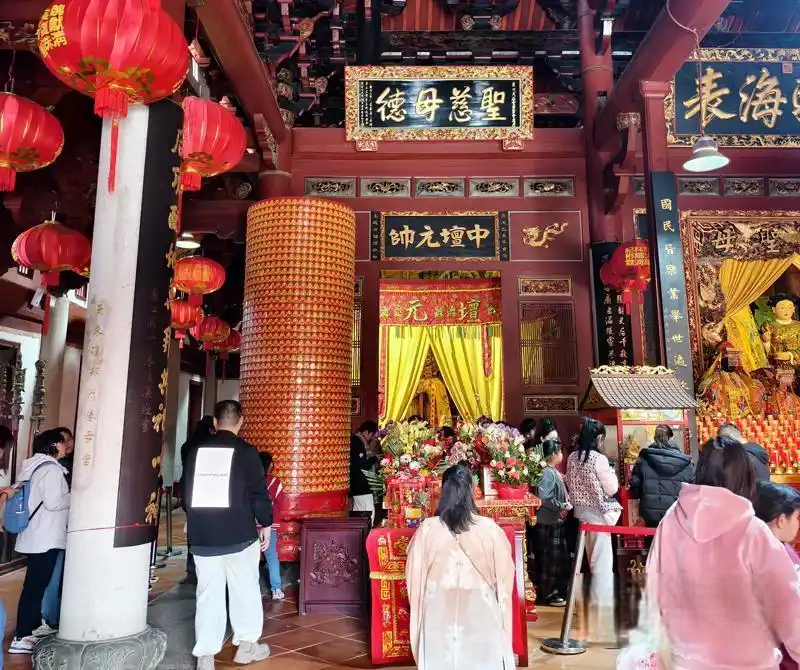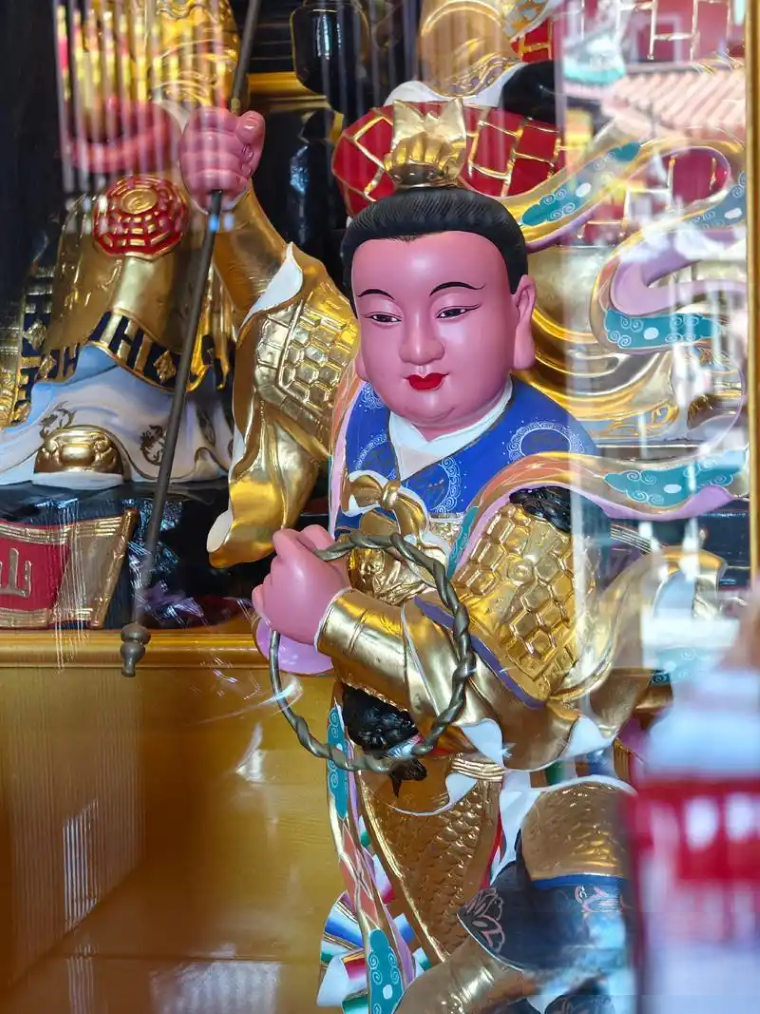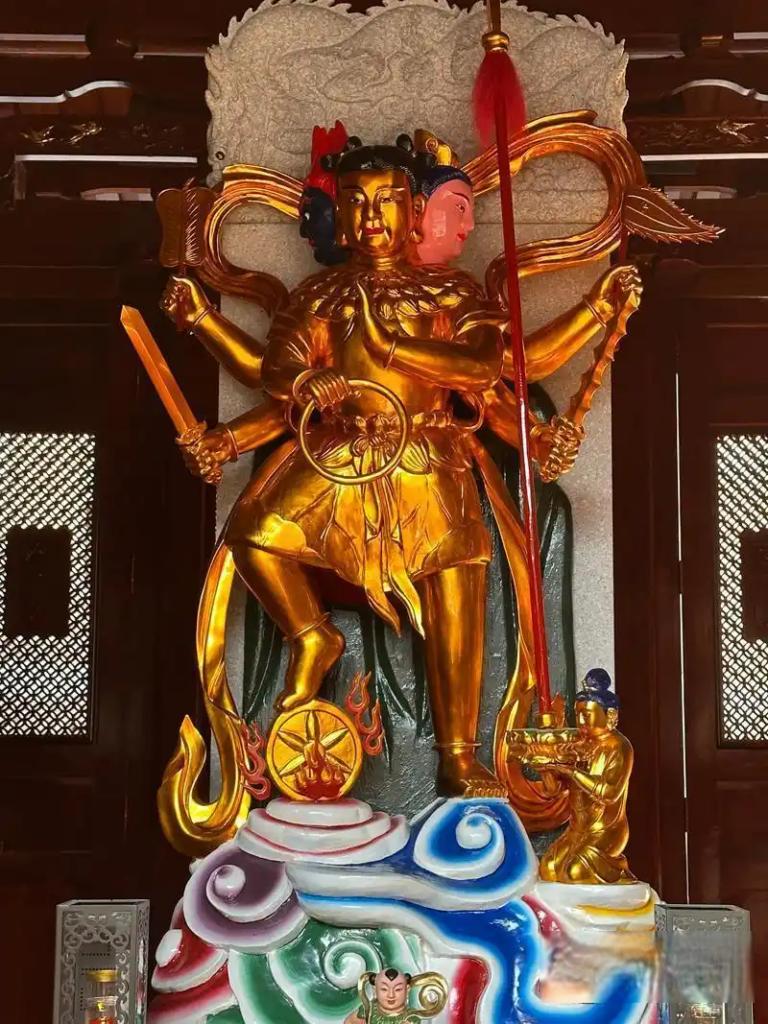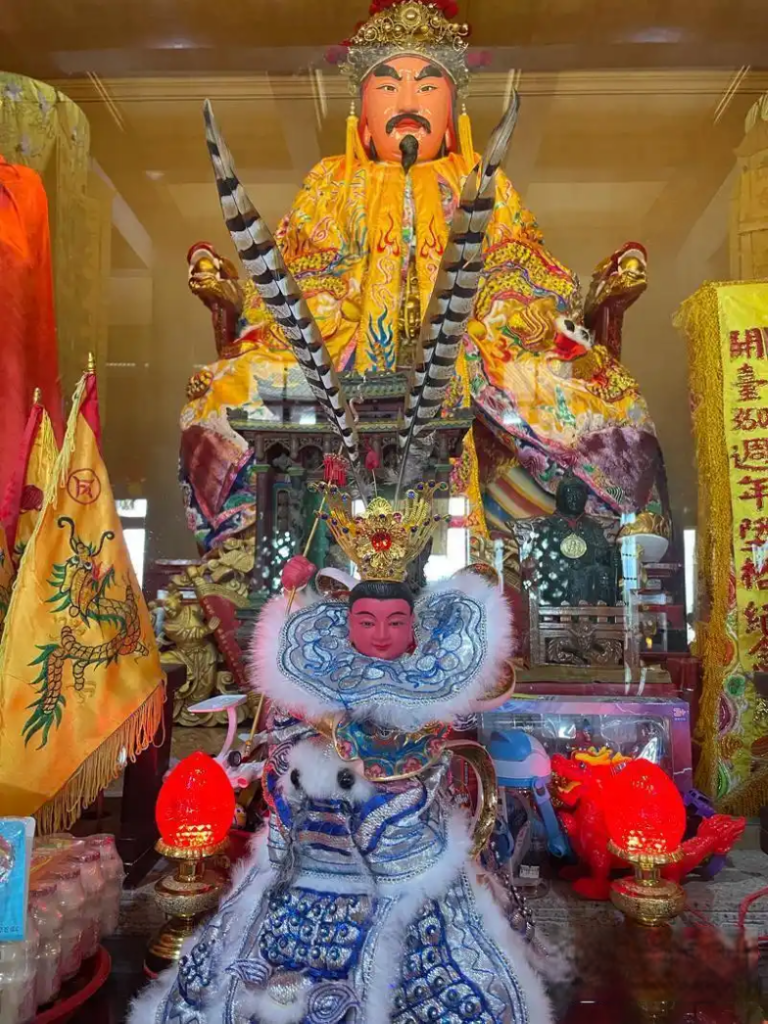In many temples in Quanzhou, the “Third Prince” Nezha is venerated. This hero not only embodies a spirit of courage and fearlessness in people’s hearts but also symbolizes the Chinese nation’s spirit of striving.
The Long-standing Faith in Nezha
In the Minnan(southern Fujia) region, Nezha is commonly referred to as “Prince” or “Third Prince,” and his birthday falls on the ninth day of the ninth lunar month. Nezha is revered as one of the Five Camp Generals before the Jade Emperor, specifically the “General of the Central Camp” or “Marshal of the Central Altar.” Although the faith in Nezha has a long history in Quanzhou, its exact origin remains difficult to trace. The portrayal of Nezha in Nezha: The Devil Boy Comes to the World—”If there is no way forward, I will carve out a path; if heaven and earth do not accommodate me, I will turn them upside down”—embodies a spirit that aligns with the Chinese nation’s spirit of striving. This is why, over thousands of years, people have loved and worshipped Nezha so much.
The Image of Nezha in Temples
In the temples of Quanzhou, Nezha is typically depicted as fully armored, holding the Hoop of Heaven and Earth, exuding a formidable presence. In some temples, Nezha is shown standing on the Wind-Fire Wheels, symbolizing a state of “first-level combat readiness.” In more advanced depictions, Nezha appears with three heads and six arms, symbolizing his vast powers and boundless magic, possibly reflecting his title as “Marshal of the Central Altar.” The famous official Hong Mai of the Southern Song Dynasty mentioned in his Notes from the Distant and the Exotic that Nezha had a “Fire Blanket Spell,” which was used to summon the Wind-Fire Wheels. However, this spell seems to have a flavor reminiscent of Arabic mythology, likely due to the frequent exchanges between Quanzhou and Arab regions during the Southern Song period.

Nezha in Gaojia Opera
On the western end of Daxi Street in the central urban area of Quanzhou, there once stood a temple named “Puren Palace,” where the Third Prince Nezha and Taiyi Zhenren were venerated. According to historical records from the Qing Dynasty, this temple was very prosperous, and it was said to be responsive to all requests. On the first and fifteenth days of each lunar month, believers would come to draw lots and pray for blessings. Today, Purun Palace exists only in ancient texts, but throughout Quanzhou, many temples still venerate Nezha, such as Tianhou Temple, Taizi Temple, Cien Temple, Zhenhai Temple, Qing Shui Temple, and Guifeng Rock.

Nezha at Tianhou Temple
Tianhou Temple, a famous sea god temple dedicated to Mazu in Quanzhou, has a history of over 800 years and is considered one of the largest and highest-specification Mazu temples both domestically and internationally. Inside the main hall of Tianhou Temple, there are three shrines; the central shrine houses Mazu, while the right side is dedicated to the “Marshal of the Central Altar” Nezha, the Third Prince, who is regarded as the guardian deity of the sea. The Twenty-four Officials Halls on the east and west sides also house statues of Nezha, responsible for the growth of young people and the prosperity of wind and fire. In the past, during the birthday of Mazu or other important festivals, Tianhou Temple would host various opera performances, including the Gaojia Opera play Nezha Creates Havoc in the Sea.

Special Veneration at Cien Temple
In Cien Temple located in Heshi Town, Lujiang District, the veneration of Nezha, the Third Prince, is particularly unique. Founded at the end of the Tang Dynasty and the beginning of the Five Dynasties period, Cien Temple worships Nezha not only as the chief protector in the Heavenly King Hall but also as the only Buddhist temple in Fujian Province to venerate Nezha as the chief protector. Initially, Nezha might have been introduced into Cien Temple due to the faith in Vaisravana, the God of Wealth and War. Later, as folk beliefs evolved, Nezha’s role as a protector against evil became more prominent. Additionally, the area where Cien Temple is located was historically a military stronghold in Quanzhou, and the veneration of Nezha may be related to the local “Five Camps” belief system, enhancing the protection of the temple and its surroundings through Nezha’s divine power.
Connection with the Anti-Wokou Hero Yu Dayou
Interestingly, the Ming Dynasty anti-Wokou (Japanese pirates) hero Yu Dayou studied at Cien Temple in his youth. Yu Dayou devoted his life to defending the country through martial arts, emphasizing “loyalty, bravery, and firmness” in his military philosophy, which highly aligns with the image of Nezha as a “young warrior god.” According to The Collection of Righteous Spirit, Yu Dayou once rebuilt the Nezha Hall at Cien Temple and wrote, “The bravery of the Third Prince is a mirror for warriors.” He saw Nezha’s courage as a model for warriors. This historical connection imbues the faith in Nezha with practical significance in protecting the country, elevating his divinity from a simple guardian deity to a symbol of national spirit.

Sea Guardian Deity
During the Song and Yuan dynasties, Quanzhou was the largest port in the East. Due to the high risks associated with maritime activities, a diverse range of sea god beliefs emerged. The legend of Nezha “creating havoc and slaying dragons in the sea” resonates with the Minnan people’s desire to conquer the ocean, thus endowing him with the function of a maritime protector. Although Cien Temple is not directly by the sea, Lujiang District, as a transitional zone between the inland and coastal areas of Quanzhou, venerates Nezha, which may serve both to guard the inland water systems and to protect maritime trade.
In summary, Nezha in Quanzhou is not only a revered hero but also a symbol of the integration of diverse cultures and beliefs in the region. A popular saying in Quanzhou goes, “Turning a corner, you meet a god.” The faith in Nezha at Cien Temple is a product of the fusion of diverse cultures in Quanzhou. Experts point out that Nezha not only serves as a temple guardian but also symbolizes the pioneering spirit and fearlessness of the people of Quanzhou, inspiring them to rise up in adversity.
In Shijing, Nan’an, there is a Nezha temple called “Third Prince Temple,” closely linked to the historical site of Jinghai Gate and the Inscription of Pacifying the Pirates. From 1546 to 1548 (the 25th to 27th year of the Jiajing period of the Ming Dynasty), Cheng Xiumin, the governor of Quanzhou, recruited soldiers in the “Four Ports” area of Nan’an (including Shijing, Yingqian, Lianhe, and Xunxun), strengthened coastal defenses, and repelled the Wokou multiple times.To honor Cheng Xiumin’s contributions in repelling the Japanese pirates, the gentry of Shijing built the Jinghai Gate and erected the “Pacification of Pirates Stele” to the southeast of it, recording Cheng Xiumin’s anti-pirate deeds. The stele text was written by Zheng Pu, a native of Shijing who served as the Prefect of Yunnan during the Jiajing period of the Ming Dynasty. Later, the people of Shijing established the “Third Prince Temple” on the gate tower of the Jinghai Gate, aiming to guard the maritime border and protect the safety of the villagers.
As for the exact construction date of the Jinghai Gate “Third Prince Temple,” it is now impossible to verify. However, for the people of Shijing, whenever a newborn reaches one month or one year old, or if a child is frail, parents will take their children to the “Third Prince Temple” to pray, hoping that the “Third Prince” will bless their children with healthy and happy growth. On Nezha’s birthday, both young and old from the village join hands to come before the temple to offer incense and make wishes.
Shijing, as one of the “three bays and twelve ports” of ancient Quanzhou, is a cultural town with a thousand-year history. It was once an important port on the Maritime Silk Road, where the tides of Majiang have witnessed countless heroic stories. Historically, this land has nurtured many heroes such as Zheng Chenggong, Chen Huoba, and Hong Jinli. The rich maritime cultural background has also fostered various beliefs, including Buddhism, Taoism, Christianity, and various folk beliefs coexisting here. Among them, the most distinctive are the Great Sage belief, the Third Prince belief, and the Yanlou Gong belief.
After enduring hundreds of years of storms, the Jinghai Gate still stands firm. To the east side of the gate, although the “Pacification of Pirates Stele” has been almost worn smooth, it still silently narrates the past glory and heroic tales of Shijing Port. The “Third Prince Temple” atop the gate tower not only serves as a comfort to people’s souls but also continuously inspires people to forge ahead bravely when facing difficulties, encouraging everyone to be positive, take on social responsibilities courageously, and work together to promote the development and progress of their hometown.
Leave a Reply